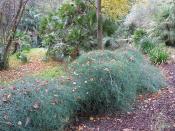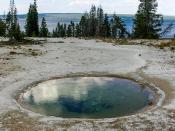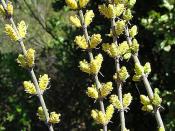Ma Huang
Today I entered Wal Mart in my search for an herbal compound on which to accomplish research. As I directed myself towards the area where they keep their vitamins and other compounds, I was telling myself that they probably would not stock too much in the way of herbal compounds. Low and behold when I rounded the corner for the aisle where these compounds are, I was shocked and taken aback at the variety of everything they have. There were things in that aisle I had never heard of, so being in a sort of rush, I grabbed the first bottled herbal compound that stood out to me, which was ma huang.
Ma huang, also known as ephedra, is the plant most commonly used as a source of ephedra products. Ma huang is a popular dietary supplement in the United States and has been used for thousands of years in Chinese medicine.
Ephedra includes "ephedrine alkaloids," which are naturally occurring compounds that are found in plants (Ephedra Education Council, 2001). The plant is found on sandy seashores and in temperate climates of both hemispheres.
Ephedra acts as a mild stimulant, with effects similar to those of caffeine. Ephedra products can enhance energy and, when used in conjunction with a healthy diet, they can also lead to weight loss. Ephedra has been used extensively for the treatment of asthma, and also as a natural decongestant and antihistamine (Brown, 1995). It has become a very popular ingredient in herbal combinations for allergies and hay fever. Since it is a stimulant which increases the metabolism and increases body temperature, it has been used to control weight and to help prevent sleep (Brown, 1995). One of the side effects of increased metabolism is an increased pulse rate and a slight elevation in...


